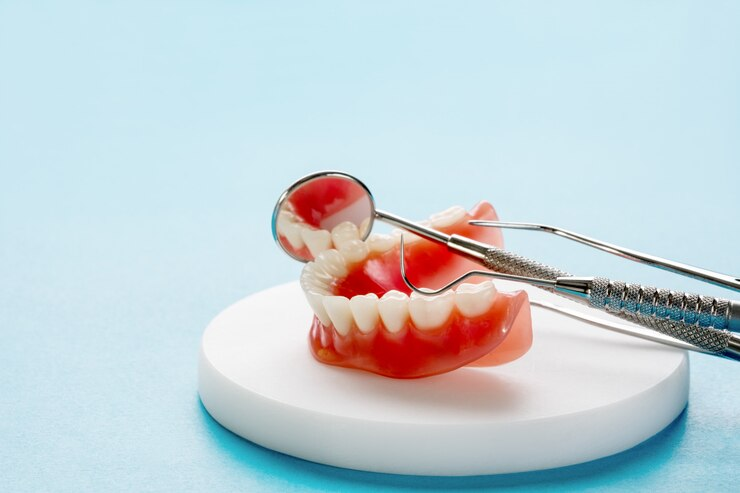 Local SEO Boost – Put Your Business on the Local Map!
Local SEO Boost – Put Your Business on the Local Map!
Exploring the Contract Manufacturing Process: A Comprehensive Guide
Written by Diane Smith » Updated on: June 17th, 2025

In today's dynamic business landscape, many companies opt for contract manufacturing to streamline their production processes and leverage the expertise of specialized manufacturers. Contract manufacturing involves outsourcing the production of goods to third-party manufacturers, allowing companies to focus on core competencies such as marketing and innovation. This article delves into the intricacies of the contract manufacturing process, highlighting its benefits, key components, and best practices.
Understanding Contract Manufacturing
Contract Manufacturing Overview: Contract manufacturing, also known as outsourcing or sub-contracting, involves hiring external manufacturers to produce goods according to specified requirements, designs, and quality standards. This arrangement enables companies to scale production, reduce costs, and access specialized manufacturing capabilities without investing in additional infrastructure or equipment.
Types of Contract Manufacturing: Contract manufacturing encompasses various industries, including pharmaceuticals, electronics, automotive, and consumer goods. Common examples include electronics contract manufacturing (ECM), original equipment manufacturing (OEM), and private label manufacturing.
The Contract Manufacturing Process
1. Initial Consultation and Planning: The contract manufacturing process begins with an initial consultation between the client and the manufacturing partner. During this phase, both parties discuss project requirements, timelines, budget constraints, and quality expectations. Clear communication and alignment of objectives are essential to establish a successful partnership.
2. Design and Prototyping: Once the project scope is defined, the design and prototyping phase commences. The client provides specifications, drawings, and prototypes to the manufacturer, who evaluates feasibility and proposes modifications if necessary. Collaborative efforts ensure that the final product meets the client's requirements and industry standards.
3. Sourcing and Procurement: The manufacturing partner is responsible for sourcing raw materials, components, and production equipment necessary for manufacturing. Strategic sourcing ensures cost-effectiveness, quality assurance, and timely delivery of materials, minimizing supply chain disruptions.
4. Production and Quality Control: With materials in hand, production commences according to the agreed-upon schedule and production plan. Quality control measures are implemented throughout the manufacturing process to identify defects, deviations, and non-conformities. Regular inspections, testing, and audits ensure that products meet predefined specifications and regulatory requirements.
5. Packaging and Labeling: Upon completion of manufacturing, the products are packaged and labeled according to client specifications. Packaging design, branding, and labeling play a crucial role in product differentiation, consumer appeal, and regulatory compliance. The manufacturing partner ensures that packaging materials are durable, eco-friendly, and suitable for storage and transportation.
6. Logistics and Distribution: Once packaged, the finished products undergo quality checks and are prepared for distribution. The manufacturing partner manages logistics, including warehousing, inventory management, and shipping arrangements. Efficient logistics ensure timely delivery of products to distribution centers or end customers, optimizing supply chain efficiency.
7. Post-production Support: The contract manufacturing process doesn't end with product delivery. Manufacturing partners provide post-production support, including warranty services, technical assistance, and product recalls if necessary. Continuous improvement initiatives and feedback mechanisms facilitate ongoing collaboration and mutual success.
Benefits of Contract Manufacturing
Cost Efficiency: Contract manufacturing enables companies to reduce operational costs, overhead expenses, and capital investments associated with in-house production facilities. By leveraging the manufacturing partner's expertise and economies of scale, clients can achieve cost savings without compromising quality or innovation.
Focus on Core Competencies: Outsourcing manufacturing allows companies to focus on core competencies such as research and development, marketing, and customer engagement. By delegating production responsibilities to specialized manufacturers, companies can allocate resources strategically and drive business growth.
Scalability and Flexibility: Contract manufacturing offers scalability and flexibility to adapt to fluctuating market demands, seasonal variations, and product diversification. Manufacturers can adjust production volumes, lead times, and product configurations to meet changing customer preferences and market dynamics.
Best Practices for Successful Contract Manufacturing
Establish Clear Communication Channels: Effective communication between the client and manufacturing partner is essential for project success. Regular meetings, progress updates, and performance evaluations foster transparency, accountability, and alignment of expectations.
Define Performance Metrics: Establish key performance indicators (KPIs) and quality metrics to measure the manufacturing partner's performance. Metrics such as on-time delivery, product quality, and cost efficiency provide insights into operational performance and drive continuous improvement initiatives.
Ensure Legal and Regulatory Compliance: Compliance with legal regulations, industry standards, and intellectual property rights is critical in contract manufacturing. Formalize agreements, contracts, and non-disclosure agreements (NDAs) to protect proprietary information and mitigate legal risks.
Build Long-term Relationships: Cultivate mutually beneficial partnerships based on trust, reliability, and mutual respect. Invest in relationship-building activities, collaborative problem-solving, and shared goals to foster long-term partnerships that drive mutual success.
Conclusion
The contract manufacturing process offers numerous benefits for companies seeking to optimize production processes, reduce costs, and enhance product quality. By outsourcing manufacturing activities to specialized partners, companies can leverage expertise, scale operations, and focus on core competencies. Effective collaboration, clear communication, and adherence to best practices are essential for achieving successful outcomes in contract manufacturing partnerships. Embracing the contract manufacturing model empowers companies to adapt to market dynamics, drive innovation, and achieve sustainable growth in today's competitive business landscape.
Note: IndiBlogHub features both user-submitted and editorial content. We do not verify third-party contributions. Read our Disclaimer and Privacy Policyfor details.
Copyright © 2019-2025 IndiBlogHub.com. All rights reserved. Hosted on DigitalOcean for fast, reliable performance.
















